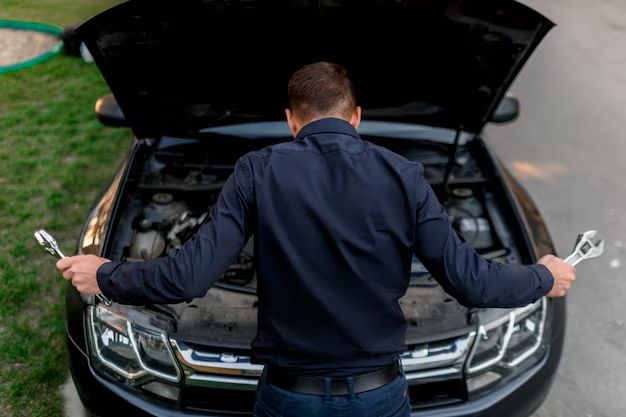Replacing a damaged bumper cover is a common repair that many vehicle owners consider doing themselves. While it may seem straightforward, there are some important factors to consider before attempting a DIY bumper cover replacement.
Page Contents
What is a Bumper Cover?
The bumper cover is the removable plastic piece that makes up the outer surface of the bumper. It is meant to protect the actual bumper and absorb minor impacts without damage. The bumper cover attaches to the bumper bar underneath using various plastic clips and fasteners.
Should I Replace a Bumper Cover Myself?
Replacing a bumper cover is generally considered an intermediate DIY repair. With proper tools and preparation, it can certainly be done at home for less cost than taking it to a professional. However, there are some challenges to consider:
- Bumper covers can be difficult to remove intact if the plastic clips are old and brittle.
- Getting the new bumper cover to align and attach properly takes patience and practice.
- Painting a new bumper cover to match the car’s color is very challenging.
- Specialized tools like clip removers help make the job much easier.
If your bumper cover only has minor scratches or cracks, using touch up paint and filler may be better than replacing the whole unit. But for collision damage, tears, or missing pieces, replacement is likely necessary.
Cost of Replacing a Bumper Cover
Professional bumper cover replacement typically costs $200-$600 or more for parts and labor. Doing it yourself can save significant money on labor costs. Here are typical costs for DIY bumper cover replacement:
| Cost | Details |
|---|---|
| Bumper cover | $100-$400+ for OEM or aftermarket covers |
| Paint supplies | $50-$200 for primer, paint, clearcoat |
| Tools | $30-$100 for removers, clip pliers, etc. |
| Total | $200-$600+ depending on parts and tools needed |
Aftermarket bumper covers tend to be cheaper than OEM factory parts. And you can save more by painting the new cover yourself versus having a body shop paint it. In some cases, you may be able to find the same color bumper cover from a salvage yard for much less.
Can I Install a Bumper Cover Myself?
Installing a new bumper cover is definitely doable at home with some mechanical ability and patience. Here are the basic steps involved:
Remove the Damaged Bumper Cover
Taking off the old cover is often the hardest and most time consuming step. Plastic fastener clips become brittle and often break during removal. Using a few specialty tools can help:
- Trim removal tools – Help pry off molding and work under edges
- Clip removers – Fit over clips to remove without breaking
- Pliers – Grip and remove broken clip stems
Work slowly around all edges, using the tools to release clips and separating fastener strips and snaps. Remove any screws behind emblems or other trim pieces. Pull firmly but carefully to free the damaged cover in one piece if possible.
Prep and Fit the New Cover
Once the old unit is removed, take time to clean the bumper area of any debris or old adhesive. Cover any bare metal with touch up paint. Test fit the new bumper cover and identify any problem spots. You may need to trim or sand certain areas to get a flush fit.
Attach and Realign the New Cover
Starting at the center, press the new cover into place with firm, even pressure. Work out towards the edges while aligning the mounting locations. Replace any screws and re-seat the fastener strips and clips. Ensure proper clearance around lights, grilles, and other trim. Adjust as needed for optimal fit and alignment.
Prep and Paint the New Bumper Cover
Once installed, prep the new raw cover for painting. Clean and scuff surfaces for primer adhesion. Apply 2-3 coats of spray primer, allowing proper dry time between coats. Follow with 2-3 color coats to match the factory bumper color, waiting for full drying between coats. Finish with 1-2 clearcoat layers for gloss and protection.
Tips for DIY Bumper Cover Replacement
Here are some useful tips to help your bumper cover replacement project go smoothly:
- Watch online video tutorials to understand the full process before starting.
- Take photos during removal to reference clip and trim locations.
- Work slowly and carefully when removing the old cover.
- Have plenty of clips, screws, and trim pieces on hand.
- Get help fitting and aligning the new cover if needed.
- Tack the cover in place with masking tape while test fitting.
- Clean and scuff the new cover properly before painting.
- Allow adequate drying time for primer, paint layers, and clearcoat.
Conclusion
Doing a DIY bumper cover replacement takes some work, but can save hundreds of dollars in labor costs. With proper preparation and tools, most mechanically inclined vehicle owners can tackle it at home. Just take care removing the old cover intact, fitting the new one precisely, and prepping/painting it to look like new again. Consider getting help your first time to learn the steps involved. And be ready for it to take a full weekend or longer. But in the end, you’ll save money and gain body repair experience.
